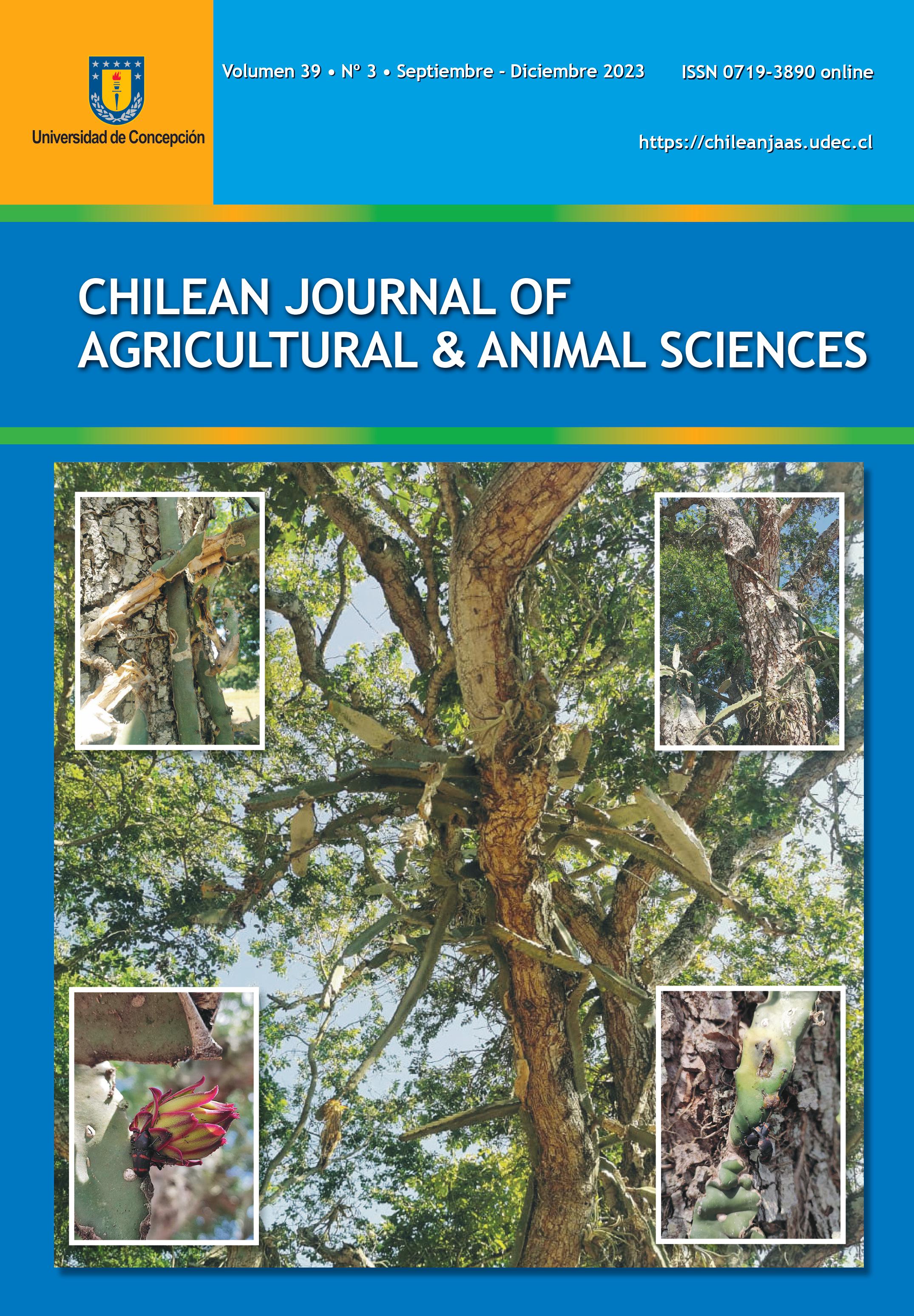PRODUCTION AND ECONOMIC EVALUATION OF THE CORRIEDALE BREED AND CROSSES WITH DOHNE MERINO GENERATED DURING THE ESTABLISHMENT OF A ROTATIONAL CROSSBREEDING SCHEME: EWE HOGGET RESULTS
DOI:
https://doi.org/10.29393/CHJAA39-29PEWR30029Keywords:
complementary breeds, dual purpose, wool production, wool quality, gross marginAbstract
Corriedale (C) is the predominant sheep breed in Uruguay, but prices for its medium fineness wool have been low. Dohne Merino (DM) has attracted interest because it has similar attributes to C, but finer wool. We evaluated wool and body traits of crossbred ewe hoggets generated during the establishment of a rotational crossbreeding scheme between C and DM. The program started with 400 C ewes. The first year 100 C ewes were mated to C rams, and the rest were mated to DM. Purebred C progeny were always mated to C rams. The crossbred progeny was randomly divided into two equal groups, one of which was mated to C rams and the other to DM rams. Subsequent progenies were mated to rams of the opposite breed to its sire. Performance was recorded from 2015 to 2020 in the ewe hoggets. Gross margin (GM) was calculated for each genotype. Differences among genotypes for subjectively assessed wool quality traits were non-significant. Genotypes with a greater proportion of C had higher fleece weight, whereas those with a greater proportion of DM had lower fibre diameter. Pure C had the lowest post-shearing live weight whereas ½DM_½C had the highest. Pure C had the lowest GM for the scenarios investigated (low and high wool price, adjustment for greater feed intake of heavier hoggets). Rotational crossbreeding takes advantage of the complementarity between these two breeds, allowing a rapid enhancement of the C producers’ income from wool without compromising the meat-producing attributes of the breed. The advantage could be greater by implementing some simple selection strategies.
Downloads
Published
How to Cite
Issue
Section
Copyright (c) 2023 Washington Bell, Ana Laura Sánchez, Raúl Ponzoni

This work is licensed under a Creative Commons Attribution 4.0 International License.







